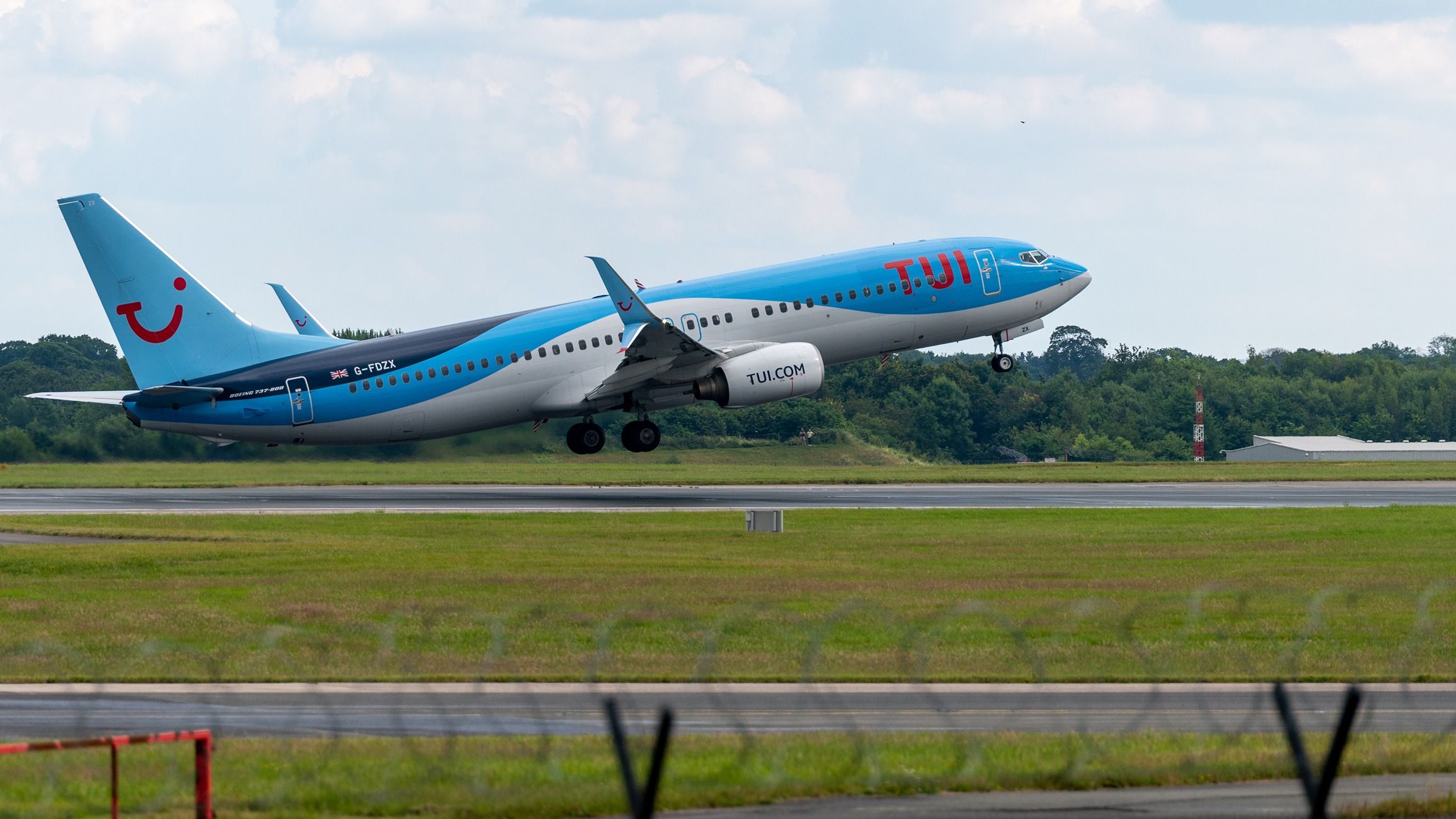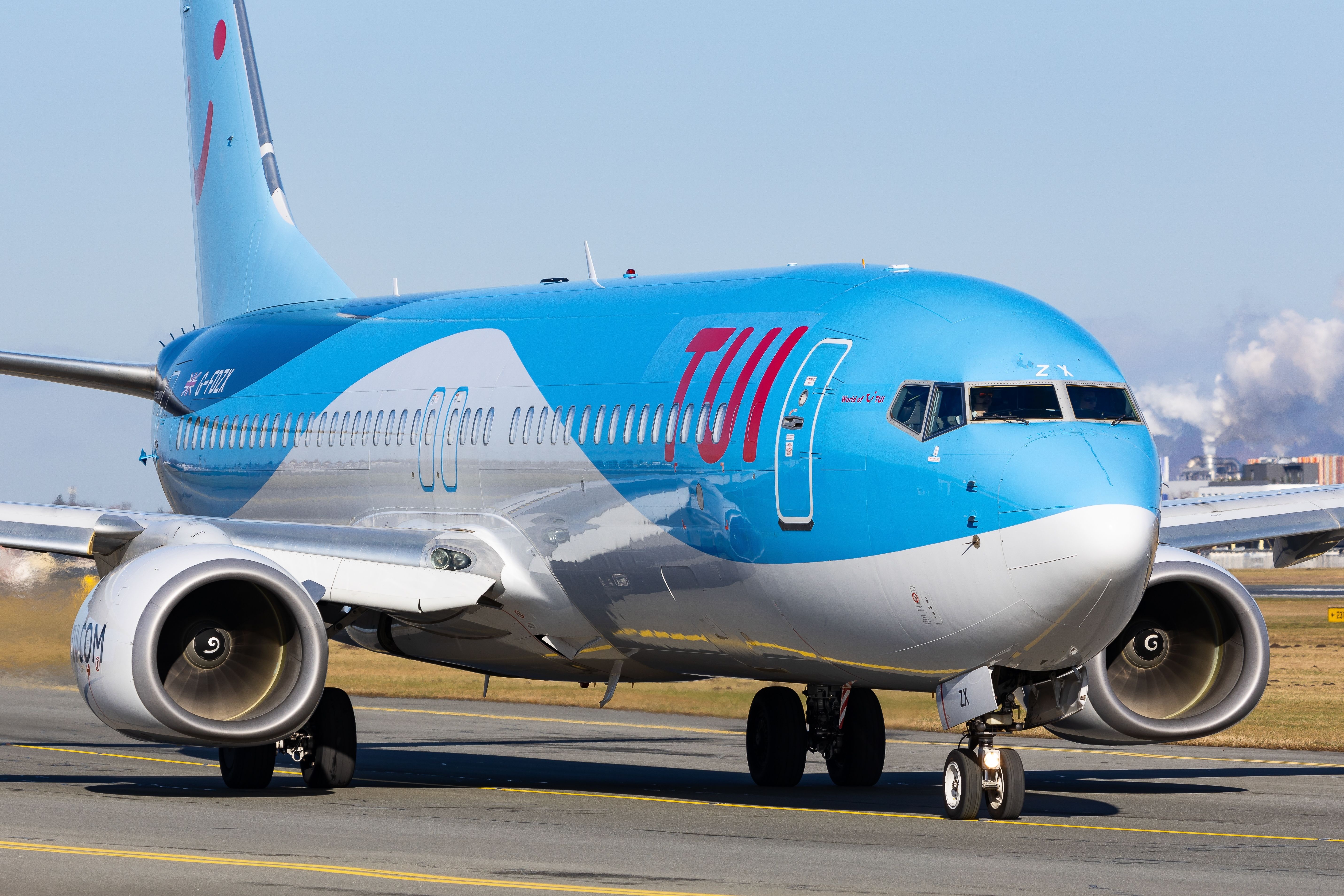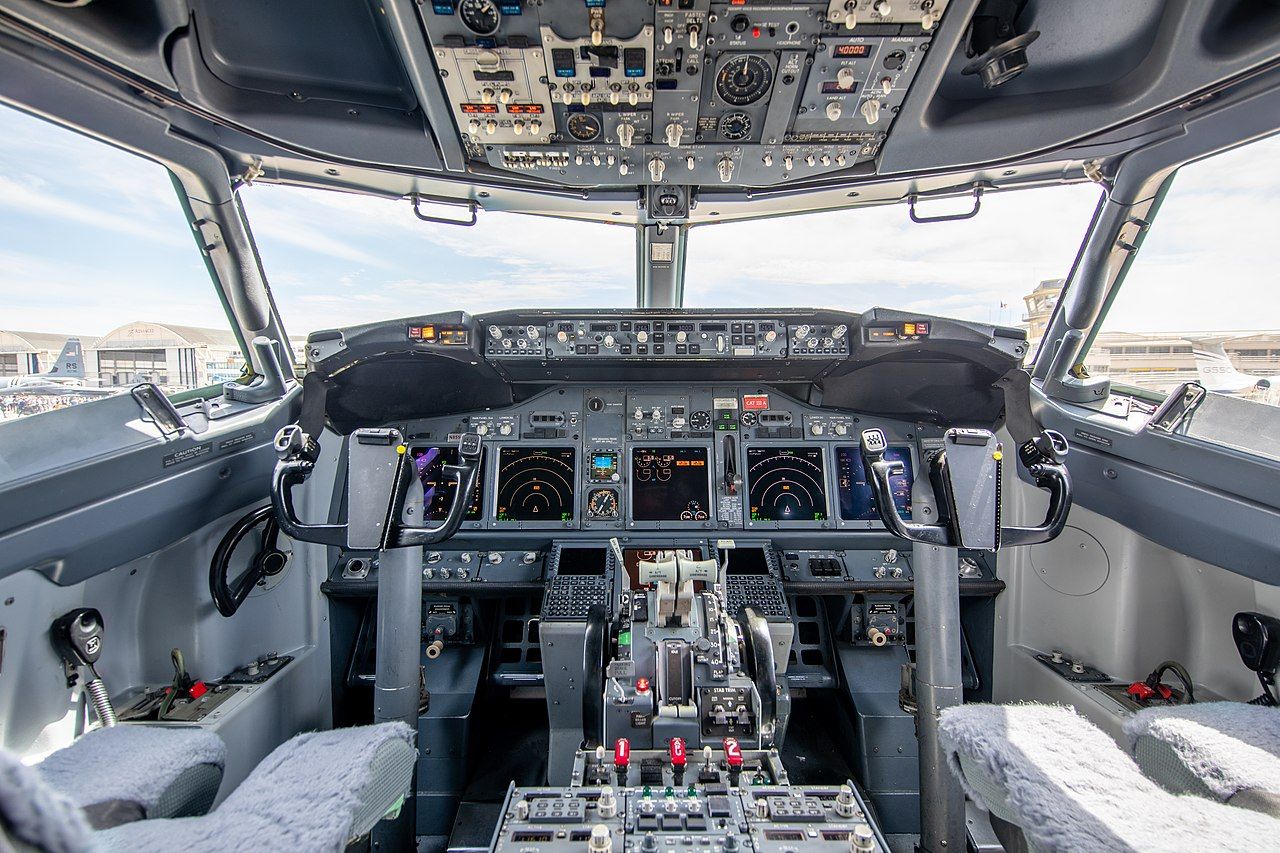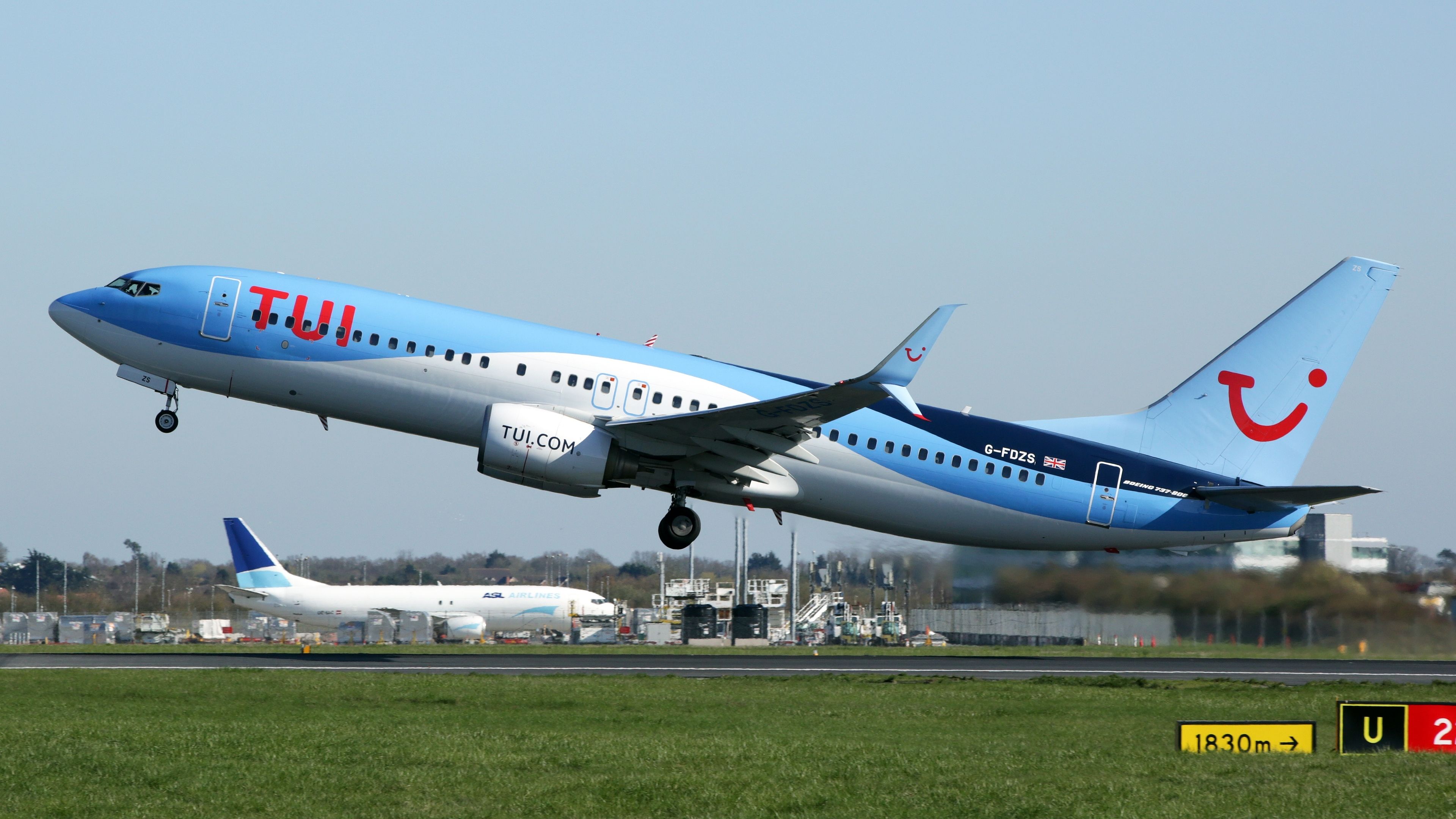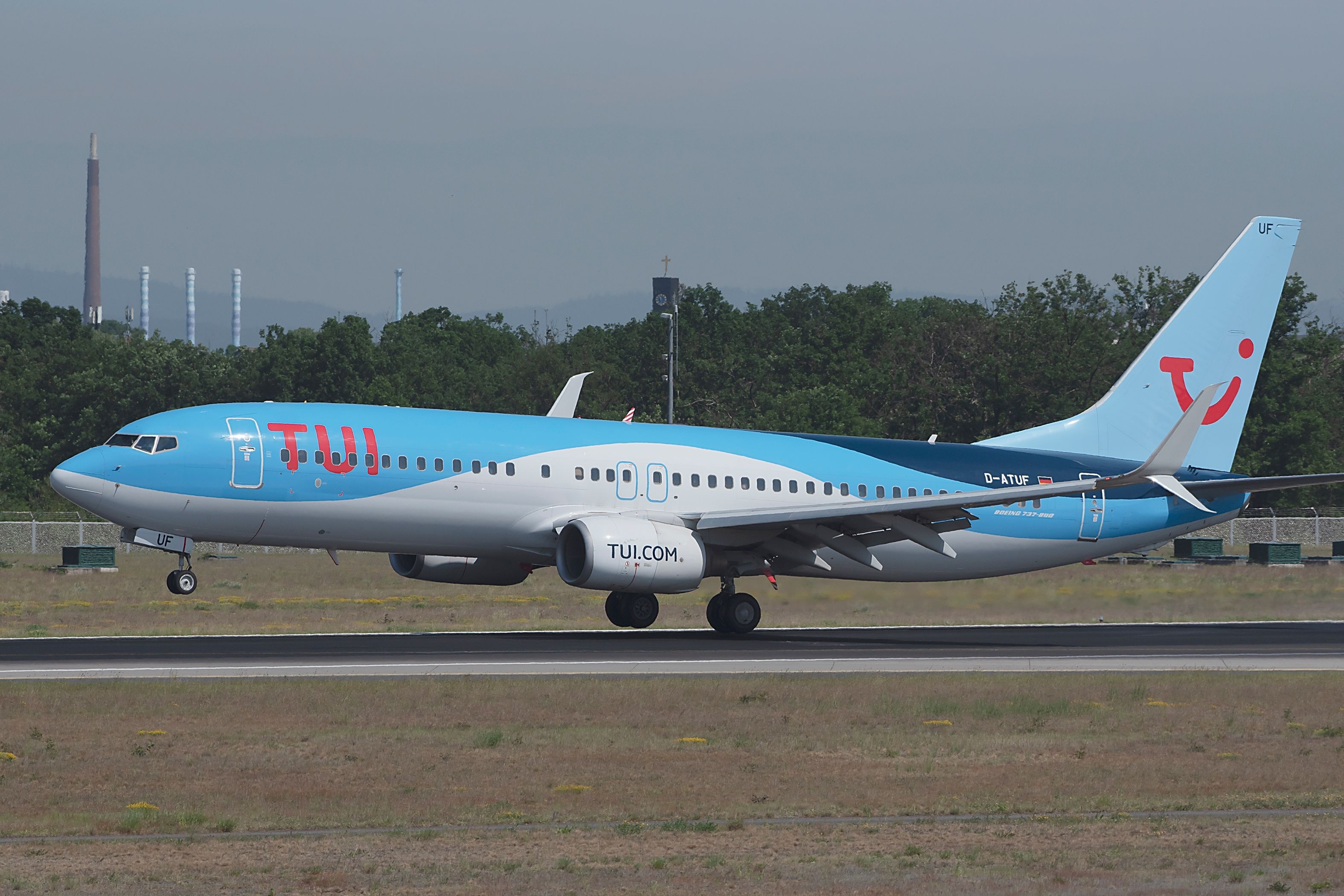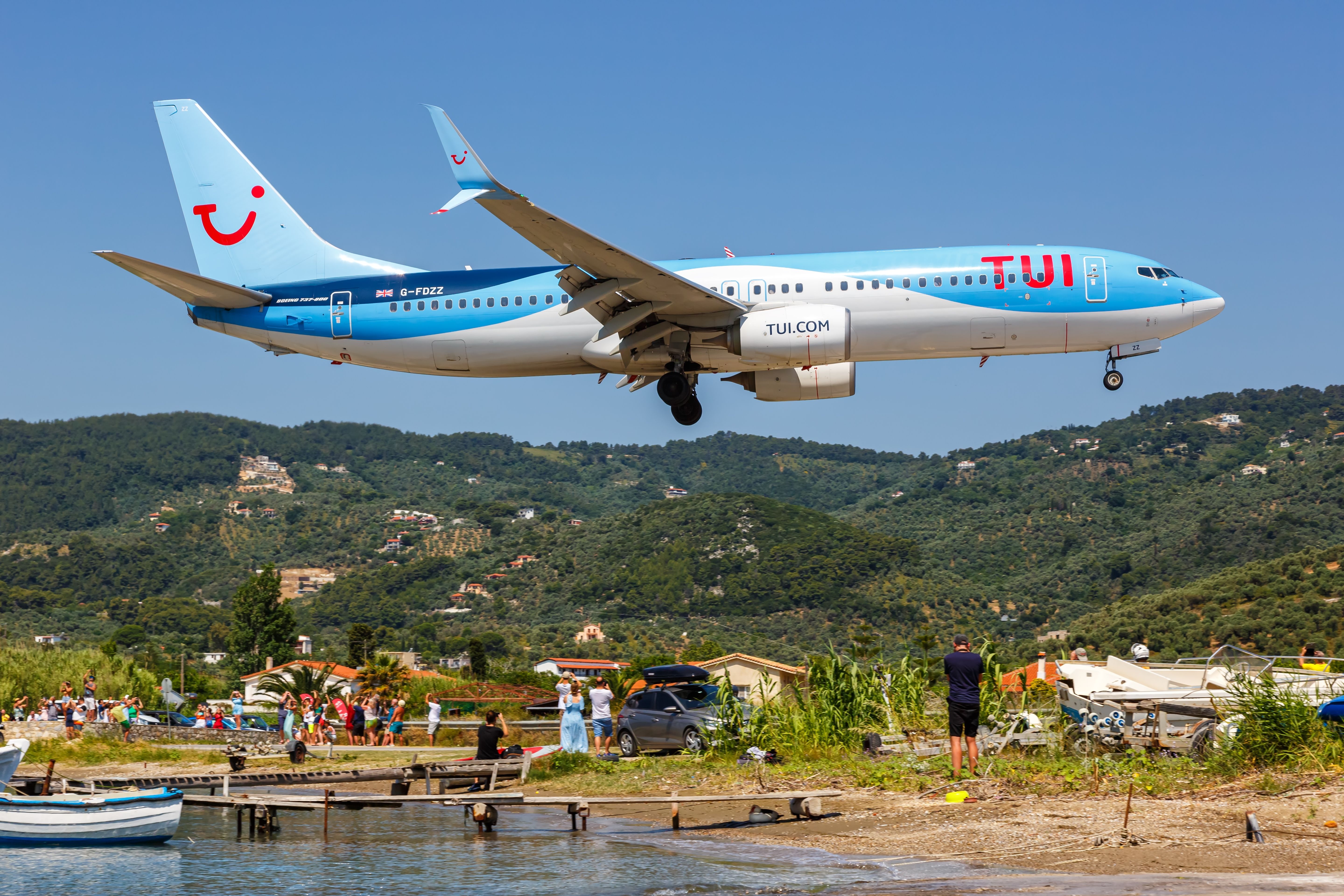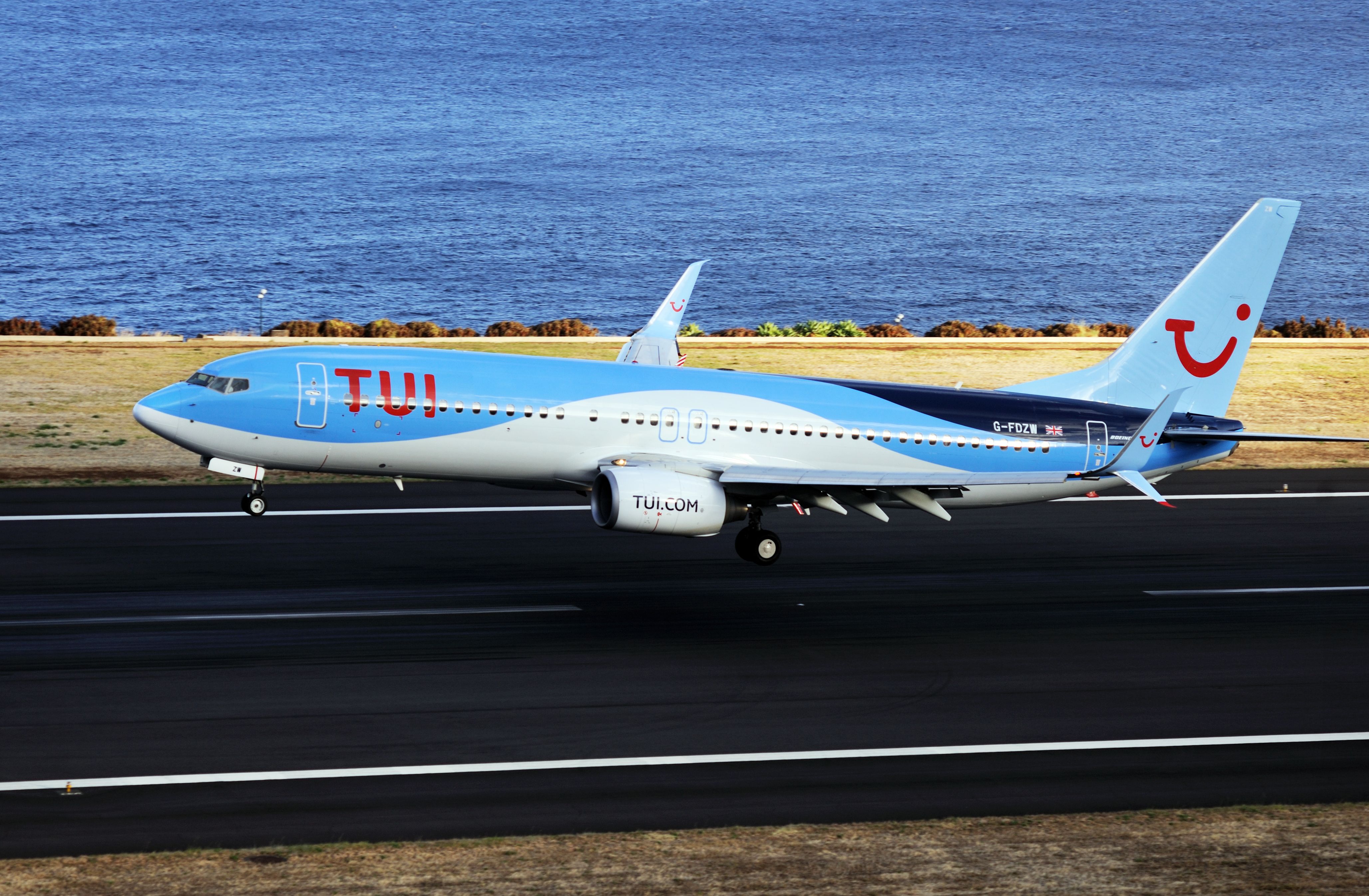Summary
- The United Kingdom Air Accidents Investigation Branch (AAIB) issued a preliminary incident report involving a TUI Airways Boeing 737-800 at Bristol Airport (BRS) in March 2024.
- Then, the aircraft’s autothrottle system failed, with the pilots also entering the incorrect thrust setting, which resulted in the aircraft taking off from the runway at a height of around 10 feet (3 meters).
- After three days of maintenance after the incident, the Boeing 737-800 has been operating flights on behalf of TUI Airways up to this day.
The United Kingdom Air Accidents Investigation Branch (AAIB) issued a special bulletin containing preliminary information about an incident at Bristol Airport (BRS) on March 4, 2024. Then, a TUI Airways Boeing 737-800, registered as G-FDZS, took off from the airport with insufficient thrust and crossed the end of the runway at the height of around 10 feet (3 meters).
Incorrect thrust settings
The investigators noted that the manually set thrust – 84.5% N1 – was below the required takeoff thrust – 92.8% N1 – and was not noticed by the pilots and not picked up through the standard operating procedures (SOP).
According to SKYbrary, N1 is the rotational speed of the low-pressure (low-speed) engine spool. However, the AAIB also pointed out that the autothrottle (A/T) disengaged when pilots selected takeoff mode at the beginning of the takeoff roll.
Photo: Photofex_AUT | Shutterstock
The TUI Airways Boeing 737-800 was operating a flight between BRS and Las Palmas Gran Canaria Airport (LPA) with six crew members and 163 passengers onboard the aircraft. The flight was also a line training sector for a new captain, who was in the left-hand seat of the cockpit, with a line training captain sitting beside him in the right-hand seat. The latter pilot was “acting as aircraft commander,” the investigators noted.
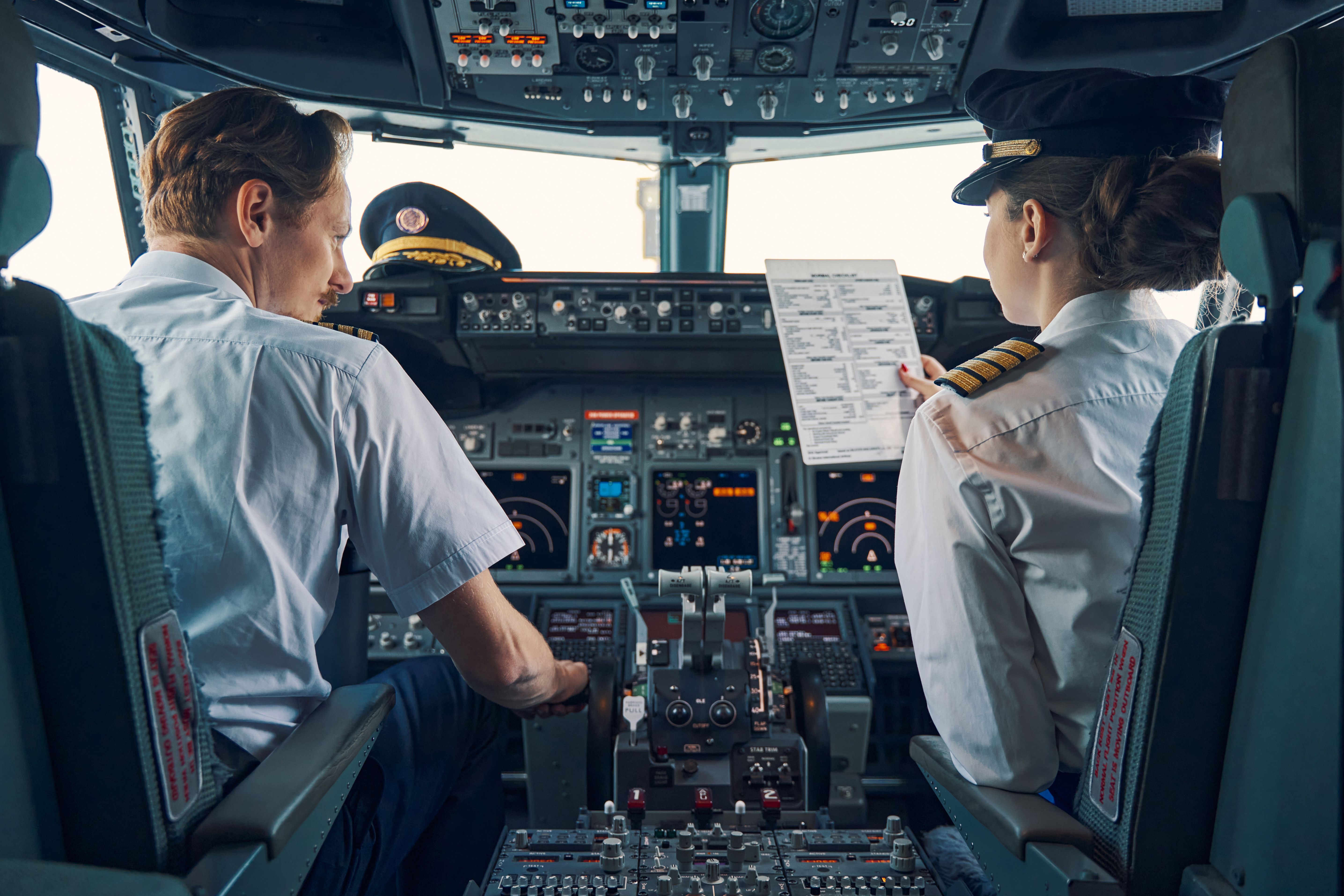
Related
The Difference Between A Captain And A First Officer
Have you ever wondered who was flying the plane?
Disengaging autothrottle
The AAIB’s preliminary report depicted the events of the flight, noting that the aircraft left its stand to taxi onto the runway at BRS at 10:41 UTC. The pilots armed the A/T on the switch on the mode control panel (MCP) during the pre-takeoff procedures, per TUI Airways’ SOP. Subsequently, the aircraft taxied onto the runway at 11:04, and the air traffic control (ATC) cleared the Boeing 737-800 to take off shortly after.
The control of the aircraft was handed over to the aircraft commander, who was the pilot flying (PF) for the flight to LPA. The PF proceeded to advance the thrust levels to 40% N1 and proceeded to wait for the engines to stabilize before pressing the Takeoff/Go-Around switch (TOGA).
Per the AAIB, the TOGA switch engages both the A/T in N1 mode and the autopilot/flight director system (AFDS) in takeoff mode. However, the investigators stated that at this point, the A/T disengaged with an associated warning.
The PF responded by arming the A/T on the MCP once again, and at the same time, the pilot advanced the thrust levers manually toward the required takeoff setting before releasing the thrust levers. The AAIB highlighted that per TUI Airways’ SOP, the pilot monitoring (PM) had to take over the controls of the thrust lever, as they did so during this flight.
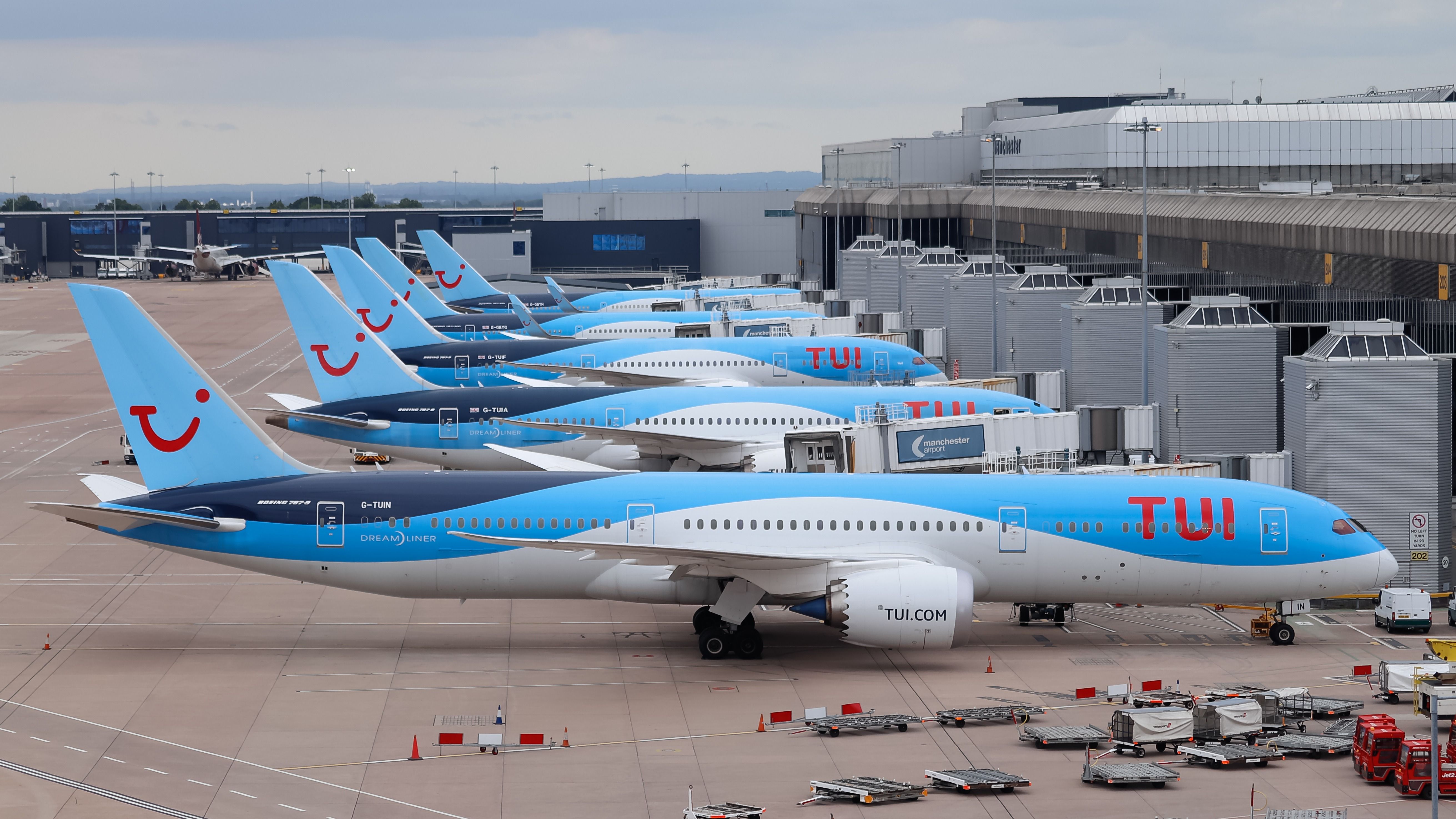
Related
What Planes Does TUI Airways Fly?
TUI Airways operates an all-Boeing fleet but uses three wet-leased Airbus A320-200s.
Significantly less thrust
However, when the PM re-armed the A/T, the system did not control the thrust lever servos, something that the pilots did not expect to happen. Instead, the A/T entered into armed mode and, thus, did not advance to the required thrust settings. The pilots did not move the thrust levers, which had remained at the level that the PF moved them to.
Photo: Grosey | Shutterstock
“Despite the SOP requiring that the thrust is set by 60 kt and checked as correct at 80 kt, the incorrect setting was missed by both pilots. This resulted in the aircraft takeoff being conducted with significantly less thrust than required […].”
The AAIB highlighted that the rotation point was 260 m (853 ft) from the end of the runway, with the Boeing 737-800 crossing the runway at a height of around 10 ft (3 m). While the remainder of the flight to LPA was uneventful, the investigators did note that the pilots had attempted to engage the A/T several times throughout the flight to the Spanish island.
In addition, the AAIB stated that while the thrust was increased at 450 ft (137.1 m) above aerodrome level (AAL), the required thrust was not attained until the Boeing 737-800 reached an AAL of around 900 ft (274.3 m), resulting in the aircraft overflying a road adjacent to BRS at less than 100 ft (30.4 m).
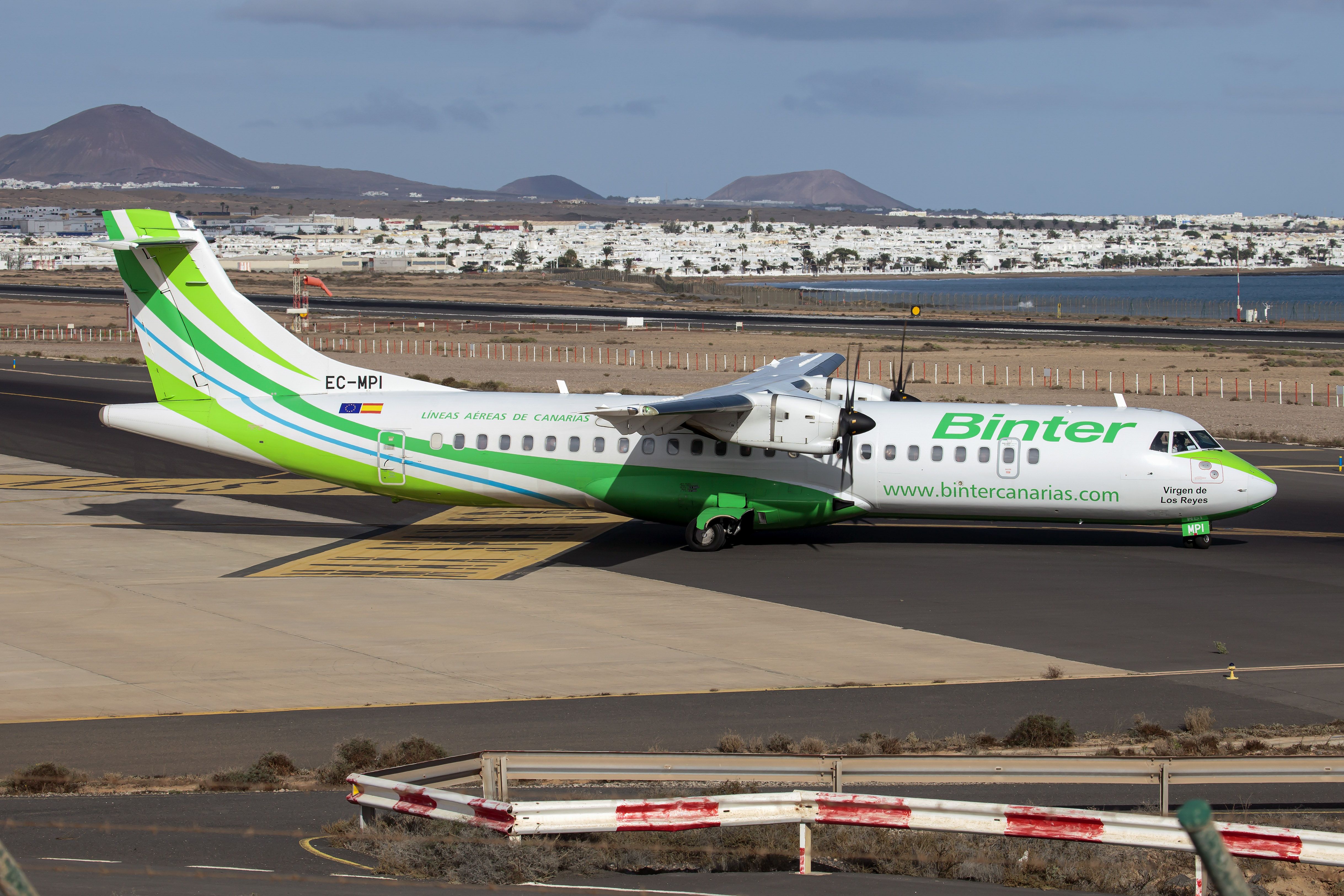
Related
Close Call: Binter ATR-72 Lands On Wrong Runway In Las Palmas
The turboprop with 72 people onboard could have crashed into an active airport vehicle on the runway.
After the investigators had gone through the Multipurpose Control and Display Unit (MCDU), they stated that the MCDU showed 11 faults on the flight to LPA, with no faults on the return flight or the preceding day. Five of the 11 faults were related to the uncommanded A/T disengagements, with the first being logged at 11:04 UTC. At that point, the TUI Airways aircraft was on the runway at BRS at the beginning of its takeoff roll.
The AAIB said the fault record indicated that the suspected cause of the uncommanded A/T disconnect was ASM 1, the A/T servo motor for the number 1 engine throttle lever. Four further disengagements happened on the flight to LPA, with two during the initial climb phase.
Photo: Vytautas Kielaitis | Shutterstock
Furthermore, the MCDU logged other faults after the initial A/T disconnect as the Boeing 737-800 accelerated on the runway. The investigators noted that these happened after the aircraft passed 90 knots airspeed and were all related to an incorrect thrust setting.
Boeing’s quick reference handbook (QRH) lists the reasons why pilots should reject a takeoff at 80 knots, including a system failure(s). According to the investigators, the disconnection of the A/T when the TOGA switch was pressed was one of the reasons, yet the flight crew continued with their takeoff roll with a thrust setting below that was calculated for their takeoff performance.
A previous AAIB recommendation urged operators to implement flight data monitoring (FDM) algorithms to detect takeoff events that otherwise could go unnoticed and unreported. While the incident at BRS was reported by TUI Airways, the airline’s retrospective analysis showed that the peak longitudinal acceleration during the incident had deviated from the typical peak longitudinal acceleration, which was exhibited on 99.7% of TUI Airways flights departing BRS.
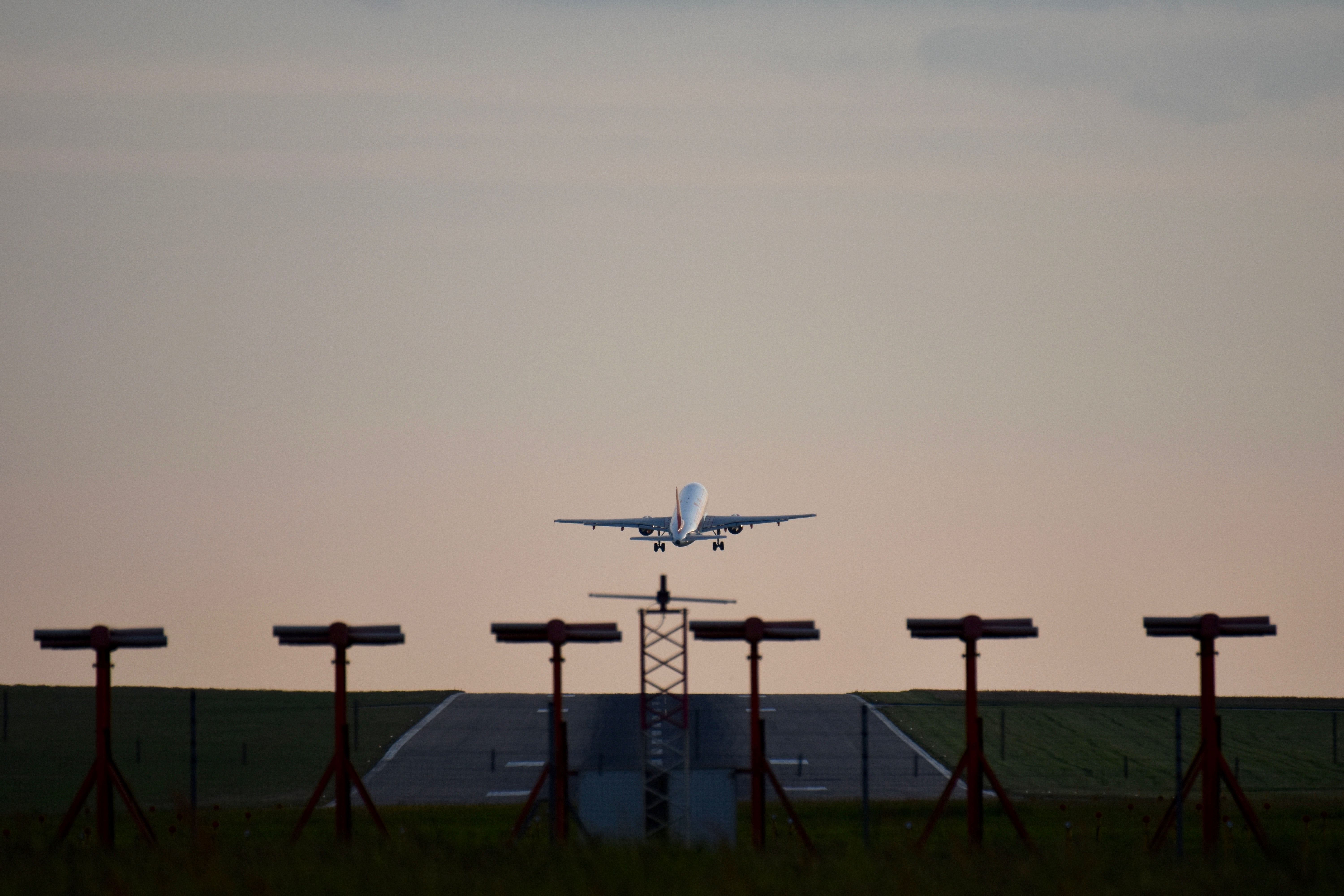
Related
16 Years On: How Airlines Briefly Boycotted Bristol Airport To Force Runway Repairs
25,000 passengers were affected by flight cancelations and disruptions, leading to forced overnight work on the runway.
Long history of nuisance disconnects
The AAIB explained that the A/T system can control the thrust from takeoff to landing on the Boeing 737 Next Generation (NG), including the 737-800. In short, each thrust lever is moved by an independent autothrottle servo motor (ASM), and they can be either moved manually or if the A/T is engaged, the ASMs will move the levers according to the computed thrust requirements.
Photo: Markus Mainka | Shutterstock
However, the AAIB stated that Boeing has said that the A/T system on the 737 NG has had a long history of “nuisance disconnects” during takeoff engagements. When the fault history is checked, it often shows a problem with the ASM for either the number 1 or number 2 lever, with subsequent checks typically showing no faults.
“Investigations by the aircraft manufacturer together with the manufacturer of the ASM found that an earlier model of the motor was more susceptible to power on or power transfer events, which can cause the ASM to shut down internally and cause a disconnect of the A/T when the TOGA switch is pressed.”
According to the investigators, the TUI Airways Boeing 737-800 was equipped with older ASMs. In October 2021, Boeing issued a Fleet Team Digest to airlines operating the 737 NG, detailing the problem and the service bulletin (SB) to replace the ASMs and apply the required flight control computer (FCC) software.
Noticing at the end of the runway
The AAIB concluded its preliminary report that humans struggle to detect acceleration rates and realize that their takeoff run does not match the calculated performance, which can be invisible until very late in the takeoff roll. In this instance, the flight crew realized that the thrust was too low after they took off from BRS, even if they had noticed how close the aircraft was to the end of the runway.
Photo: LIAL | Shutterstock
“The investigation continues to examine all pertinent factors associated with this serious incident and a final report will be issued in due course.”
According to Flightradar24 data, G-FDZS has continued flying for TUI Airways since the incident, having operated three flights on May 31 at the time of writing. However, since it returned to BRS following the incident flight to LPA, it was taken out of commercial service for three days before it operated a flight to Lanzarote Airport (ACE) on March 7.
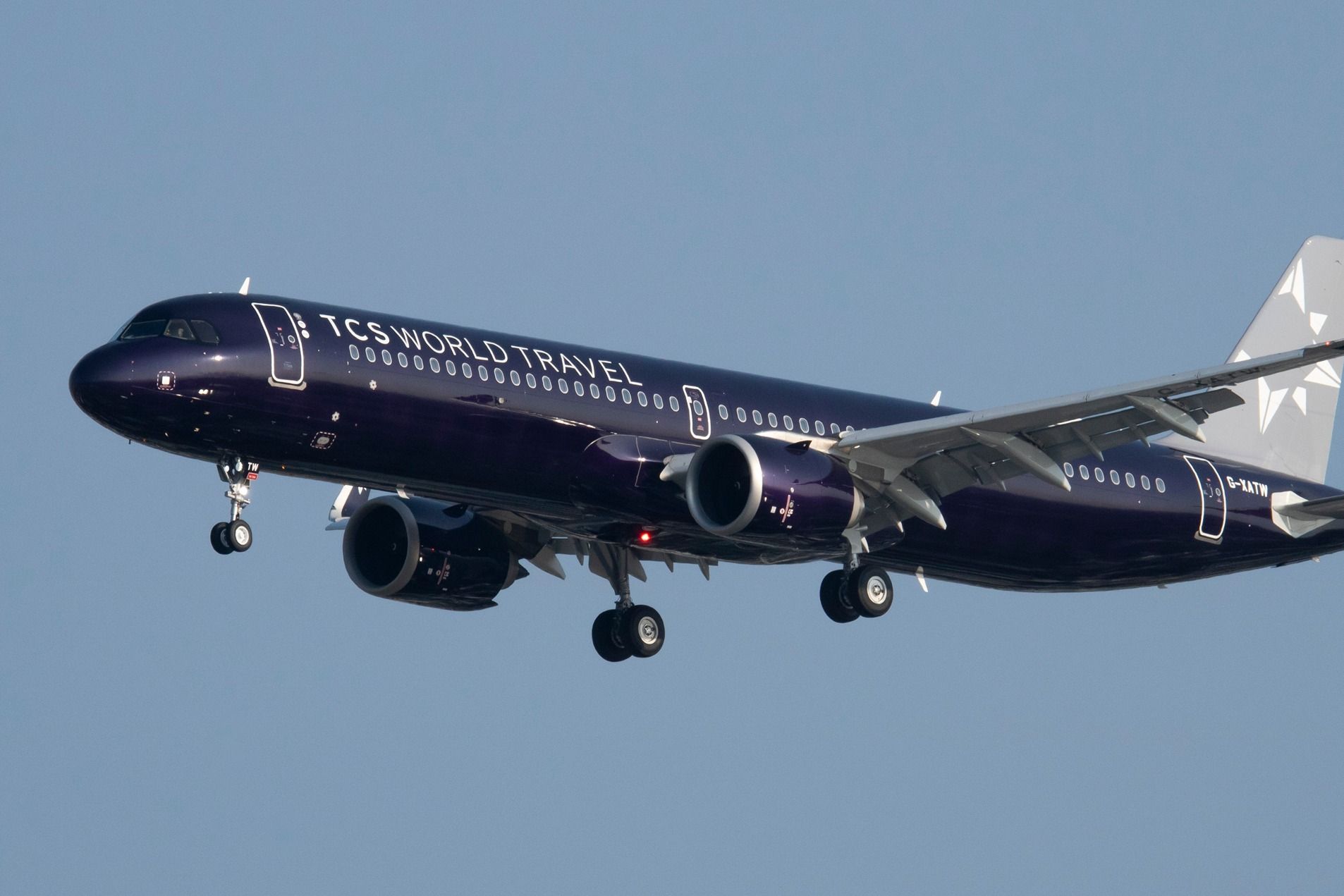
Related
Titan Air Airbus A321neo Window Failure Report Prompts Warning On High-Intensity Film Lights
The investigators unveiled that both sides of the Airbus A321neo were involved in a filming of an advert for more than nine hours.

